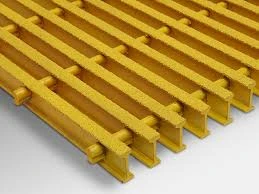loading...
- No. 9, Xingyuan South Street, Dongwaihuan Road, Zaoqiang County, Hengshui, Hebei, China
- admin@zjcomposites.com
- +86 15097380338
- Welcome to visit our website!
Innovative Applications of Fiber Reinforced Polymer Structural Components in Modern Engineering
Understanding FRP Structural Sections Revolutionizing Construction Materials
Fiber Reinforced Polymer (FRP) composites have emerged as a game-changer in the field of construction and structural engineering. These materials, characterized by their lightweight, high strength-to-weight ratio, and resistance to corrosion, have gained significant attention in recent years. In this article, we will explore the advantages of FRP structural sections, their applications, and the future of this innovative material in construction.
What Are FRP Structural Sections?
FRP structural sections are composite materials made from a polymer matrix reinforced with fibers, typically glass, carbon, or aramid. These fibers enhance the mechanical properties of the polymer, resulting in a material that combines the best attributes of both components. The most common forms of FRP in structural applications include beams, columns, and plates. Due to their inherent properties, FRP sections are increasingly being used in various construction projects, from bridges and buildings to parking garages and marine structures.
Advantages of FRP Structural Sections
1. Lightweight One of the most significant advantages of FRP is its lightweight nature. This feature reduces transportation costs and simplifies handling during construction. Structures made from FRP can often be installed at a fraction of the weight of traditional materials like steel or concrete.
2. High Strength Despite being lightweight, FRP offers remarkable strength and stiffness. This high strength-to-weight ratio allows for the design of slender structures with minimal material use, reducing overall costs without compromising structural integrity.
3. Corrosion Resistance Unlike traditional materials, FRP does not corrode when exposed to moisture, chemicals, or environmental pollutants. This durability extends the lifespan of structures, making FRP particularly suitable for applications in harsh environments, such as coastal areas, chemical plants, and wastewater treatment facilities.
4. Low Thermal Conductivity FRP materials exhibit low thermal conductivity, which significantly reduces heat transfer. This property is beneficial for thermal insulation and energy efficiency in buildings, contributing to lower utility costs.
frp structural sections

5. Design Flexibility The manufacturing process of FRP allows for greater design flexibility. Engineers can create complex shapes and profiles that are difficult or prohibitively expensive to achieve with conventional materials. This advantage facilitates innovative design solutions tailored to specific project requirements.
Applications of FRP Structural Sections
FRP structural sections are being increasingly used across various sectors, including
- Transportation Infrastructure FRP is used in the construction of bridges, where its lightweight nature reduces the need for heavy foundations, allowing for rapid installation. Furthermore, FRP’s corrosion resistance makes it ideal for use in marine and coastal structures.
- Building Construction In commercial and residential buildings, FRP components can be integrated into floors, walls, and façades, offering both functional and aesthetic advantages.
- Industrial Applications In environments where chemical exposure is a concern, such as refineries or wastewater treatment plants, FRP can be used to construct tanks, piping systems, and supports, ensuring longevity and reduced maintenance costs.
The Future of FRP Structural Sections
As technology advances and more research is conducted, the potential for FRP structural sections continues to grow. Innovations in manufacturing processes, such as automated fiber placement and 3D printing of FRP materials, have the potential to further decrease costs and improve performance. Additionally, as sustainability becomes an increasingly important consideration in construction, FRP’s recyclability and reduced environmental impact will make it a preferred choice for future projects.
In conclusion, FRP structural sections represent a significant evolution in construction materials. Their unique properties offer numerous advantages over traditional materials, making them an attractive option for various applications. As awareness and technology progress, we can expect FRP to play a prominent role in the future of sustainable and resilient structural design.
-
Premium FRP Handrail for All ApplicationsNewsAug.29,2025
-
Low Maintenance FRP Mini Mesh Grating ProductsNewsAug.29,2025
-
Innovative FRP Square Tubes for Modern Industrial SolutionsNewsAug.29,2025
-
FRP Water Storage Tanks Wholesale Solutions for Bulk BuyersNewsAug.29,2025
-
FRP Molded Grating Solutions for Diverse Industrial ApplicationsNewsAug.29,2025
-
Construction Advancements Through FRP Pultruded ProfilesNewsAug.29,2025
-
Why Choose FRP Railings, Guardrails, and Handrail Systems?NewsAug.29,2025
